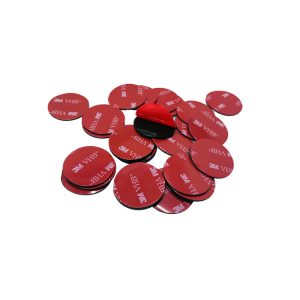The problem of glue overflow in the die cutting process of double sided tape
xinstJul 19, 2021
The problem of glue overflow in the die cutting process of double sided tape
The double-sided adhesive is based on tissue paper, PET, PVC film, non-woven fabric, foam, acrylic foam, film ~ ~ etc., and the two sides are evenly coated with elastomer pressure sensitive adhesive or resin pressure sensitive adhesive. Acrylic pressure-sensitive adhesive, etc., the roll-shaped or sheet-shaped adhesive tape made on the above-mentioned substrate is composed of a substrate, an adhesive, and a release paper (film) part. Widely used in nameplates, plastic lamination, automobiles, mobile phones, electrical appliances, sponge, rubber, signs, paper products, toys and other industries, home appliances and electronic instrument parts assembly, display lenses.

Glue overflow is a relatively common quality abnormal phenomenon in the tape die-cutting process. Glue overflow refers to the problem of glue stains on the tape due to temperature rise/improper operation, etc. during the die-cutting process. There are many reasons for the overflow of glue, which are related to the processing process of the tape; it is related to the storage environment of the material, the use of the knife mold, and the operation method of the staff.
In order to effectively solve this problem, we should start with the following aspects:
1. Purchase suitable adhesive materials and use tape within the expiration date.
2. When storing the tape, use a plastic bag to completely seal it to prevent moisture absorption;
3. Store the film vertically to prevent the side from being compressed (If there are support frames at both ends in the package, they should be stored horizontally).
4. Consider changes in pressure, temperature and humidity;
5. Use dyeing and printing to determine the depth of die-cutting so that it can be adjusted in time during processing.
6. In the die-cutting process, reduce the unwinding tension and reduce the coiling tension.
7. Immediately remove the edge material after punching to ensure that the cut film will not stick to the finished product again.
8. Develop a regular cleaning plan and use a glue remover to remove the residual glue on the machine (rollers, punching tables, molds, knives...)
In the process of product mold cutting, the product's dirty and wrinkle problems are mainly caused by foreign matter contamination and cleaning problems. To solve these problems, we mainly start from the following aspects:
Regardless of whether the tension of the main material before entering the tool is too large, whether the two ends of each compression shaft are balanced, whether the product pressure is balanced, use the finished sensor as much as possible or minimize the force of the finished shaft.
Whether the release force of the scrap is too large;
Is it necessary to add a pointed stripper;
Check whether the raw material has the same problem, and whether the drive shaft in contact with the raw material is clean;
Whether the pad knife foam needs to be replaced, whether the static elimination equipment is working normally, and whether each pressing shaft is clean;
When the product is found to have scratches, check whether the raw materials have the same problems, whether there are special tapes on the drive shaft of each die cutting machine that contact the raw materials, and whether the cleaning meets the environmental requirements.

